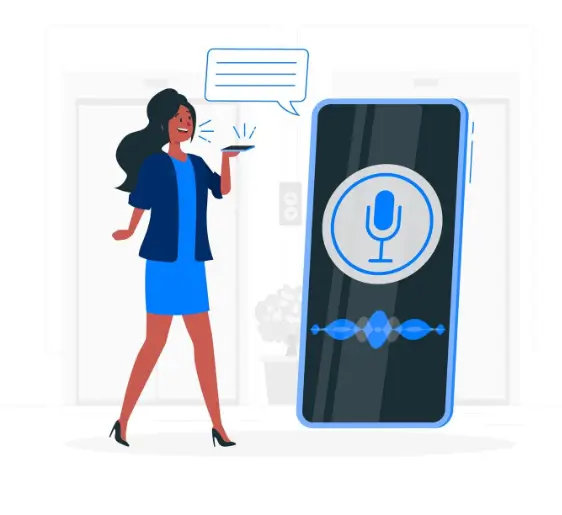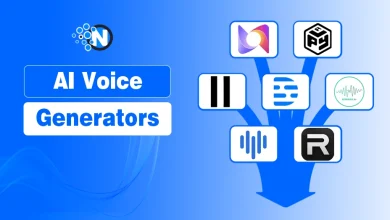Impact of Voice Assistants on Digital Marketing Strategies
The evolution of voice assistants has delivered significant advantages to users as they can now easily perform their activities through voice commands. Thus, considering its rapid proliferation, the developers have designed numerous devices that support voice commands to engage more users.
Commonly used devices like smartphones, smart speakers, and wearables all support this unique technology. Besides, they also have enormous effects on other fields, and digital marketing is no exception, as people tend to search more with their voices than typing.
In this guide, we will explore the impacts of voice assistants on digital marketing strategies.
<strong>Key Stats of Voice Assistants on Digital Marketing</strong>
📈 71% of consumers now prefer using voice search over typing when querying something online.
📈 Only 17% of marketers currently track voice search metrics with a gap and opportunity in voice analytics.
📈 65% of 25–49-year-olds speak to voice-enabled devices at least once per day.
📈 Voice Search has grown from $116.83 billion in 2024 to $151.39 billion in 2025, with a CAGR of 29.6%.
<strong>What are Voice Assistants?</strong>
Start creating Verdict in seconds, and convert more of your visitors into leads.
Generally, voice assistants are AI-powered tools capable of carrying out the desired operations with the help of voice. Users can request various actions, such as:
- Playing music
- Finding recipes
- Locating nearby restaurants
- Answering questions
- Setting reminders and alarms
- Making purchases
- Controlling smart home devices
- Sending messages and making calls
Moreover, they have changed the way potential users deal with technology. They rely more on the voice-based searches to get the answers of their queries and perform everyday activities. Furthermore, the purchase decisions are also influenced greatly by the help of this advanced technological development.

<strong>Impacts Of Voice Assistants On Digital Marketing Strategies</strong>
Start creating Verdict in seconds, and convert more of your visitors into leads.
In the previous section, we described how voice assistants are affecting the purchase decisions of users as they tend to search more with their voices. While typing the query, the search engines, especially Google bots, could not understand the context and deliver more suitable results.
However, when you ask a question through voice command, it is easier for Google to understand the nature of it and show the most relevant websites. Thus, marketers must change their approach to meet the demands and upscale their business growth.
In the under-section, we have described the impacts of voice assistants on Digital Marketing strategies.
1. Change The Queries’ Style
Voice Assistants have greatly impacted the way people search for queries regarding a particular topic. Thus, search engines produce different kinds of results for both typed and voiced questions.
Typed searches typically use shortened phrases like “best tech gadgets office productivity,” while voice searches use natural, conversational language:
- Typed: “best tech gadgets office productivity”
- Voice: “What are the best tech gadgets to increase the productivity of the office?”
The voice commands are more comprehensive and deliver more personalized results to users. As a result, they will have their hands on more effective products.
2. Promote Featured Snippets
One of the most significant impacts of voice assistants is that they deliver only one result, generally the featured snippets. The snippet is actually the zero position website that appears in the Google search results whenever we search a query. Digital marketers who optimize their content to appear in featured snippets will capture the most visibility and potential sales.
Google selects it on the basis of the most relevant information and considers it to be trustworthy. With the rise in competition, developers have made numerous plugins and tools to deliver a convenient way to businesses to come into the zero position result. Therefore, a digital marketer must look for the specified software to promote his business up in the rankings.
3. Impacts On Content Style
Voice-based questions are more comprehensive; thus, the search engines show different results based on the content that relates maximum to it. This shift has challenged businesses with outdated content strategies, potentially causing traffic loss as voice assistants primarily deliver featured snippets.
In response, digital marketers have elevated their content quality by:
- Creating FAQ sections that address common voice queries
- Developing content that answers specific questions
- Using natural, conversational language
- Implementing structured data markup to help search engines better understand content
- Creating content focused on local search queries, as voice searches are often location-based
They use long-phrase keywords and highly searched terms to find their way into the featured snippets. Besides, voice assistants are used to present them to new audiences.
4. Improved SEO Directions
Getting the first rank in Google results and appearing at the Zero position are two different things. Some brands can conveniently hold the top result, whereas others fail to appear in the featured snippets as it demands more advanced SEO techniques:
- Optimizing for question-based keywords (who, what, when, where, why, how).
- Focusing on long-tail keywords that mirror natural speech patterns.
- Improving page loading speed (voice search results typically load 52% faster than average pages).
- Ensuring mobile optimization, as many voice searches occur on mobile devices.
- Implementing schema markup to provide context to search engines.
5. Use of Data Analytics
With the increased use of voice assistants, the brand needs to utilize data analytics tools to extract customers’ data and find the most searchable queries.
- Extract customer data
- Identify the most frequently searched voice queries
- Analyze user intent behind voice searches
- Track voice search conversion rates
- Identify patterns in voice search behavior by demographi
Digital marketers can target them more effectively by adding them to their content to scale their businesses.
6 – Enhanced Users Experience
Voice assistants have totally changed the way a business can grow to capture more audience. Therefore, it is becoming critical for online brands to follow the necessary techniques to capture the maximum audience. The marketers need to;
- Provide more personalized information to clients
- Create seamless voice interactions
- Develop voice-friendly content.
- Ensure consistent brand voice across all voice interactions.
- Design voice apps or skills for popular voice assistants like Alexa or Google Assistant
7. Integration with Multimodal Experiences
One of the latest developments in voice assistant technology is the shift toward multimodal experiences, where voice commands are complemented by visual elements and touch interactions. This integration is transforming digital marketing in profound ways.
Smart displays like Amazon Echo Show, Google Nest Hub, and various smartphone voice assistants now combine voice inputs with visual outputs, creating rich, interactive experiences. This multimodal approach presents new opportunities for marketers:
- Visual-voice marketing campaigns that integrate spoken prompts with visual confirmations
- Interactive product demonstrations triggered by voice commands.
- Voice-activated visual search for products, with 62% of marketers reporting higher conversion rates from multimodal interactions.
- Brand narratives that unfold through a combination of voice dialogue and visual storytelling.
- Enhanced e-commerce experiences where users can ask questions about visually displayed products.
8. Voice Commerce and In-App Purchasing
The rise of voice commerce purchases made directly through voice assistants represents one of the most significant recent impacts on digital marketing. This frictionless purchasing experience is rapidly becoming a preferred shopping method for many consumers.
Key developments in voice commerce include:
- Seamless in-app purchasing capabilities within voice assistant ecosystems.
- Voice-based product recommendations based on user preferences and history.
- Subscription services managed entirely through voice commands.
- Voice payment authentication through biometric voice recognition.
- Voice-initiated reordering of previously purchased items.
This shift toward voice-initiated purchasing requires marketers to optimize product listings for voice search, create voice-specific purchasing paths, and develop voice-first promotional strategies. Brands that fail to accommodate this emerging shopping behavior risk losing significant market share in the rapidly evolving digital marketplace.
<strong>Final Verdicts</strong>
Start creating Verdict in seconds, and convert more of your visitors into leads.
This technology has brought a great revolution in everyday life, attracting more and more people. They tend to rely more on search-based queries than typed ones to get more personalized results.
Therefore, marketers must bring ultimate changes in digital marketing strategies, like improved SEO techniques, content quality, using data analytics, and enhanced user experience.
Thus, they can capture the maximum audience and generate heavy revenue to achieve the desired milestones. That’s all about this guide. Stay tuned for more information!





